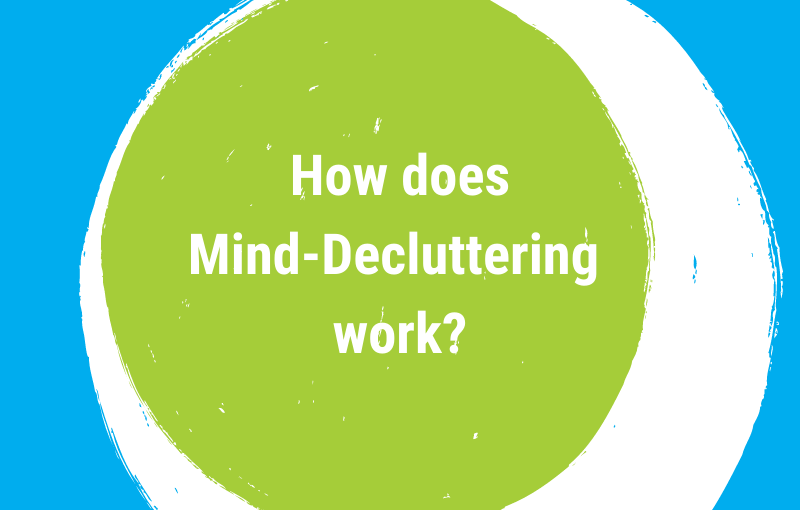The basics of the mind-decluttering process
How does the mind-decluttering work look like
Brooke Castillo from The Life Coach School has developed a self-coaching tool, ‘The Model’, which I use to declutter my own mind, and also apply when I help my clients get started with decluttering the stories they tell themselves about their homes and lives.
‘The Model’ is quite simple. It’s based on two main premises
-
- There are circumstances in the world that we cannot control – other people, our past, external events, etc. Circumstances are neutral, they are facts that everyone can agree on.
- Our circumstances are the only thing that’s not within our control. Everything else we can control: our thoughts, our feelings, our actions, and our results.
The very important and powerful consequence is that we have much more control over our lives than we usually think.
And that’s exactly where taking-control of our life starts – with our thoughts, with the stories we tell ourselves.
The stories we tell ourselves create feelings. These feelings fuel our actions (or our inaction!). And our actions create the results we have in our life.
Making changes in our life, such as decluttering our paperwork, for example, is often so frustrating because we try to change our action without changing the thought or feeling that’s driving the action.
As long as we let our ‘old’ thoughts and feelings guide us, ‘new’ actions are hard to realise which makes new – better – results less likely.
This is an example of a typical ‘cluttered thought model’:
-
- There is a circumstance. – ‘The desk in my home office is covered by 3 piles of paperwork, each of them containing about 100 pieces of paper.’ (This is neutral, it’s a fact, everyone can agree on this observation.)
- I have a thought about the circumstance. – ‘This looks terrible. I should have a clean desk.’
- The thought creates a feeling. – ‘I feel ashamed. And overwhelmed.’
- The feeling fuels action/inaction. – ‘I plan to clear up the desk, but then postpone it, again and again. I start to avoid the home office, and only enter it to drop more papers on the desk.’
- The action/inaction creates a result. – ‘The desk is full of papers, it looks messy.’
If we look at this model, we can easily understand why it’s difficult or impossible to clear up our paperwork if we tell ourselves the story that ‘This looks terrible. I should have a clean desk.’, and feel ashamed and overwhelmed about it.
The desired action, decluttering the desk, becomes much easier if we change the story.
Although we can’t change the facts directly (several piles of paper on our desk), we have the power to change what we think about it, and, as a consequence, we change what we feel, do and achieve about it.
A much more powerful ‘clutterfree thought model’ could be:
-
- There is a circumstance. – ‘The desk in my home office is covered by 3 piles of paperwork, each of them containing about 100 pieces of paper.’
- I have a thought about the circumstance. – ‘I like clear surfaces. If I invest 2 hours in decluttering my desk now, I will enjoy a clear desk afterwards.’
- The thought creates a feeling. – ‘I feel determined.’
- The feeling fuels action/inaction. – ‘I start decluttering the desk immediately and use the 2 hours of time I have available right now to finish the work.’
- The action/inaction creates a result. – ‘The desk is clear and clean.’
Changing the results in our life is only possible if we become experts in analysing and changing the stories we tell ourselves.
Becoming aware of our thoughts is the starting point.
Whenever a result is not what we want it to be, whenever we don’t feel and act as we want to, we can ask ourselves:
-
- What’s going on in my mind right now?
- What am I thinking?
- Does it serve me?
- How does it make me feeling?
- And acting?
And then we can decide to change our story by starting to think differently:
As soon as we purposefully decide to think thoughts that create positive feelings of motivation and determination, we start taking action – and we start getting the results we want.

